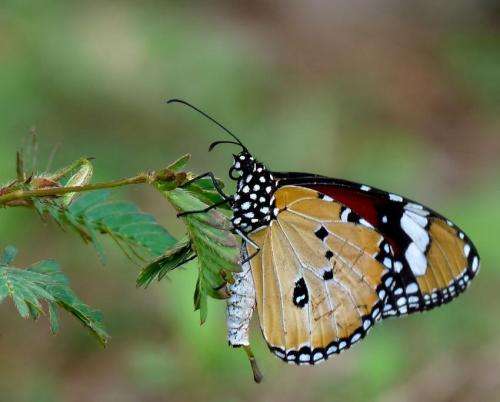The search for human pheromones

"Do humans have pheromones?" asks a review published in Proceedings of the Royal Society B today. Professor Tristram Wyatt from the University of Oxford says that if we want to find out we need to start from scratch.
Pheromones are chemical signals that help animals to communicate. Members of the same species respond to each other's pheromone releases by changing a behaviour or undergoing a physiological change. For example male house mice pheromones trigger aggression in other males and speed up puberty in young female mice. Though pheromones have been discovered across the animal kingdom, so far evidence for a human pheromone is elusive.
'Smelly t-shirt' experiments, where participants sniff the armpits of worn t-shirts, are sometimes mistakenly thought of as pheromones. These, however, are smells that help identify how compatible our immune systems are with one another. Importantly pheromones aren't unique to individuals in this way but are common to all members of a species.
Since the 1970s some androstenone steroids have been called human pheromones but the results don't add up, says the paper published today. Androstenone and androstenol have pheromone effects in pigs and are also found in human armpit sweat but Professor Wyatt writes in the paper that doesn't necessarily prove they're also human pheromones.
Despite the lack of robust evidence so far Professor Wyatt says that there's no reason why humans couldn't have pheromones but that if we want to find them we need to study ourselves in the way we study other animals. 'There are no shortcuts,' writes Professor Wyatt.
Scientists should use biological tests to prove potential pheromone chemicals cause a behavioural or physiological response in a test group and then artificially synthesise the active molecule. Then researchers should test that, at the concentrations found naturally, to see if the synthesised 'pheromone' recreates the original change in humans.
To find pheromones scientists need to start looking beyond the armpit, says the review. In fact the most promising pheromone might not even be to do with sex but to do with mothering. Smell is important to suckling babies and scientists have already shown that a nipple secretion taken from a lactating mother and put under a sleeping baby's nose makes them respond with sucking- even if the baby doesn't belong to the mother.
'We do not yet know if humans have pheromones,' writes Professor Wyatt. 'But we can be sure that we shall never find anything if we follow the current path. We need to start again'.
More information: "The search for human pheromones: the lost decades and the necessity of returning to first principles." Proc Biol Sci. 2015 Apr 7;282(1804). pii: 20142994. www.ncbi.nlm.nih.gov/pubmed/25740891
Journal information: Proceedings of the Royal Society B
Provided by The Royal Society



















